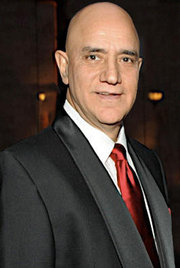A message from former 3QD contributor, Dr. Shiban Ganju, founder of Save A Mother:
 Save A Mother is a non-profit organization working to reduce maternal and infant mortality in India. Since our beginning in 2008, we have grown steadily in our operations in India and in number of supporting chapters in the USA, UK.
Save A Mother is a non-profit organization working to reduce maternal and infant mortality in India. Since our beginning in 2008, we have grown steadily in our operations in India and in number of supporting chapters in the USA, UK.
In 2008, we started working in partnership with local NGOs in the state of Uttar Pradesh, India, which has one of the highest maternal mortality rates in the world. We started in one districts and now expanded to five districts including one in Karnataka. We aim to minimize suffering and death due to pregnancy and childbirth. We are currently working in 854 villages in India and we will expand to 1400 villages by the end of 2011.
Health is not possible in the absence of health literacy. Save a Mother trains health activists from the community to spread health literacy. The trained health activists educate women about pregnancy, nutrition, immunization, delivery and care of the child. The activists not only complement the public and private health delivery system but also amplify their effect. They also educate the population about their rights to hold the health delivery system accountable. Some of the key services include: three day initial health literacy training followed by many one day refresher training sessions. We conduct about 8 training sessions a month and have conducted over 950 training sessions so far.
Save A Mother conducts periodic impact analysis to assess both quantitative data and as quality of life achieved. We collect data on the number of trained health activists, number of mothers registered, number of their prenatal visits, medicines supplied, immunization status and deaths due to pregnancy and delivery. Neonatal deaths are also recorded.
We have trained over 2000 activists so far. We have successfully reduced maternal mortality ratio by 93 % from 645 to 65 and neonatal mortality by 66% from 41 to 9. We spend about $100 per village in one year to achieve these results. Our cost is low because we are a volunteer organization and our administrative cost is zero. All donations go for field work.
Save-a-Mother recognizes the need of an aware, sensitized population, who would consider health care as a collective responsibility. Health care should begin with owning responsibility of personal and community health. Many other regions in the world are in a similar situation, and we hope to bring this special effort to other countries.
We believe that one preventable death is one too many. We urge you to support Save A Mother and together we can save millions.
More here. Please contribute using the widget in the right-hand column just above the “RECENT COMMENTS” section. Thanks.
I was just 21 when I went to work for Muammar Gaddafi. Like the other young women he hired as nurses, I had grown up in Ukraine. I didn’t speak a word of Arabic, didn’t even know the difference between Lebanon and Libya. But “Papik,” as we nicknamed him—it means “little father” in Russian—was always more than generous to us. I had everything I could dream of: a furnished two-bedroom apartment, a driver who appeared whenever I called. But my apartment was bugged, and my personal life was watched closely.
